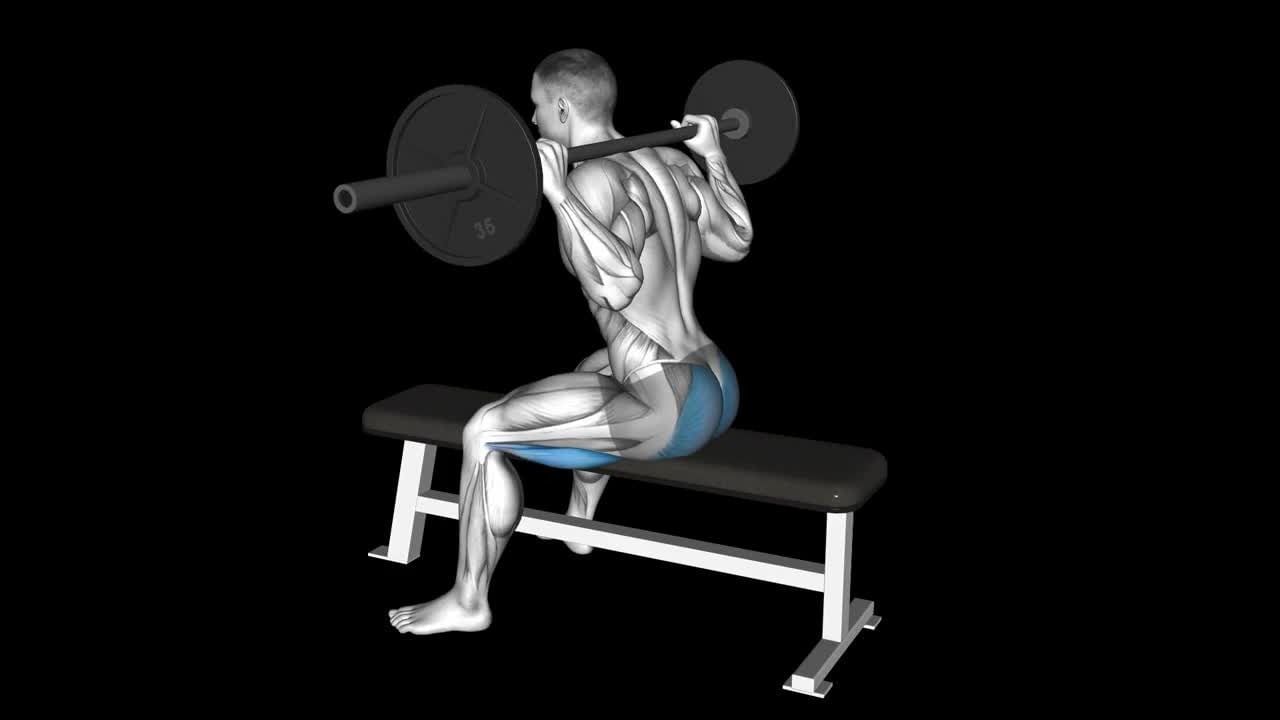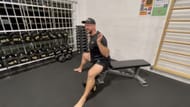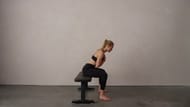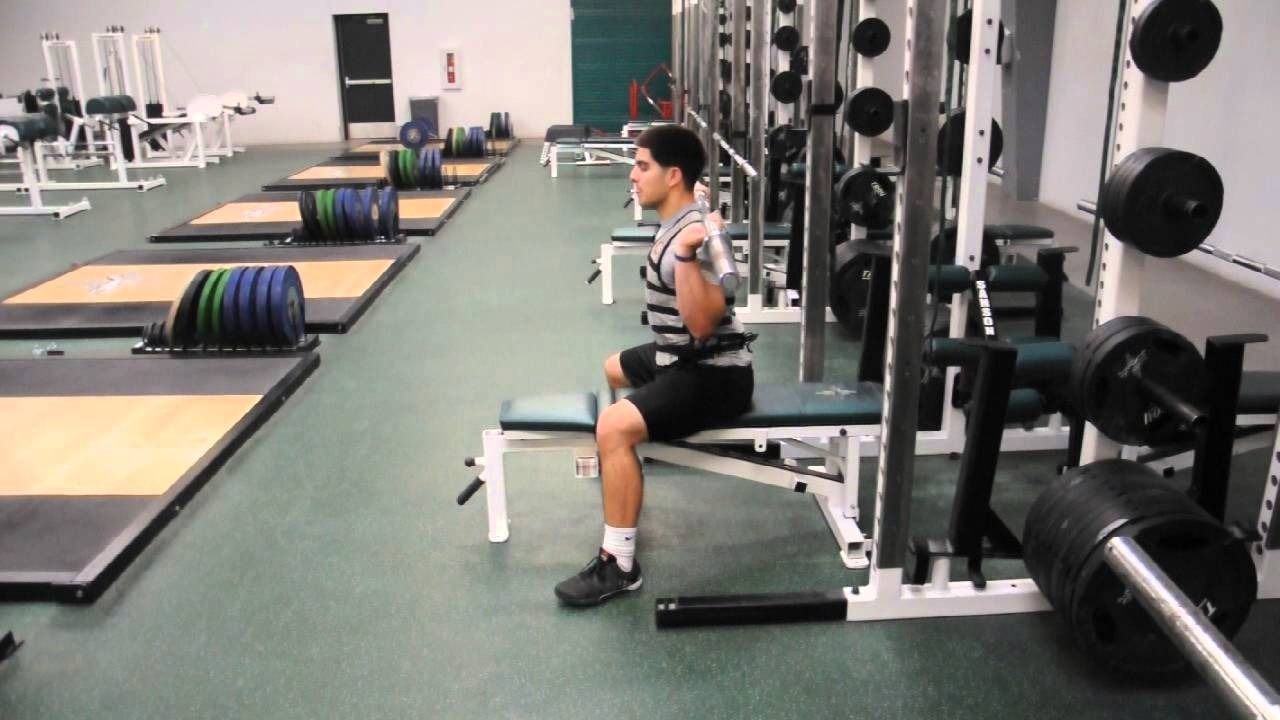The seated good morning exercise has gained popularity for the results it promises to every fitness enthusiast who has performed it. It doesn't just focus on strengthening your lower back, but your glutes and hamstrings are actively participating in the movement as well. Along with these, it has contributed to the alleviation of pain for some people who suffered from severe lower back pain.
The exercise can be performed with a barbell and a pair of dumbells, and you just need a bench to sit on. While performing, you need to focus completely on your glutes and simultaneously activate your lower back and hamstrings. The seated good morning exercise is one of those exercises which demand the utmost mind-muscle connection, and you just can't use the momentum of your body.
As you might have guessed, this is a great exercise to be taken up on an intense leg day. Right after you have completed hitting your quadriceps, you can turn to this exercise to tire your hamstring and glutes.
How to Perform the Seated Good Morning Exercise?

Equipment
- Bench or chair
- Optional: Dumbbells or a barbell for added resistance
Instructions
Set up your bench or chair: Place the bench or chair on a level surface and ensure it's stable and won't move during your exercise.
Position yourself: Sit on the edge of the bench or chair with your feet shoulder-width apart. Your knees should be bent at a 90-degree angle, and your feet should be flat on the ground.
Optional: Add resistance. If you want to increase the intensity of the exercise, hold a dumbbell or a barbell across your upper back, just below your shoulders. Ensure that you can maintain proper form with the added weight.

Maintain proper posture: Sit up straight with your chest lifted and your shoulders back. Your spine should be in a neutral position and your core engaged.
Begin the movement: Slowly lean forward from your hips while keeping your back straight. Imagine hinging at your hips as if you're closing a door with your butt. Keep your head in line with your spine, and avoid rounding your back.
Lower your upper body: Continue to lean forward until your upper body is parallel to the ground or as far as your flexibility allows, without compromising your form. You should feel a stretch in your hamstrings and tension in your lower back.
Return to the starting position: Slowly reverse the movement by pushing through your hips and bringing your upper body back to an upright position. Exhale as you return to the starting position.

Repeat: Perform the desired number of repetitions, typically 2-3 sets of 10-15 reps, depending on your fitness level and goals.
Cool down: After completing your sets, stretch your hamstrings and lower back to improve flexibility and reduce muscle tension.
How Does It Help You?
Enhanced lower back strength: This exercise primarily targets the lower back muscles, aiding in their strengthening. This can lead to lower back pain relief and reduced injury risk, fostering a more stable and robust lower back for improved posture.
Improved hamstring development: Engaging the hamstrings, situated at the rear of your thighs, the seated good morning contributes to their development. Strong hamstrings are vital for activities like walking, running, and squatting, also promoting knee stability.

Activated gluteal muscles: This exercise activates the gluteal muscles (glutes), enhancing not only aesthetics but also playing a vital role in hip stability, posture, and overall lower body strength.
Enhanced hip flexibility: Regular practice of the seated good morning requires a wide range of motion at the hips, leading to improved hip flexibility. This flexibility is beneficial for various activities, including sports and daily movements.

Increased core stability: To maintain proper form during the exercise, your core muscles come into play. This engagement enhances core stability, potentially improving balance and reducing the risk of back injuries.
Strengthening the lower back and core muscles with the seated good morning exercise can have a positive impact on your posture, helping you maintain an upright position throughout the day and reducing the tendency to slouch or develop a rounded upper back. So, add it to your leg day exercise and see yourself improve.
